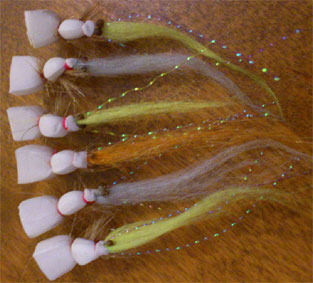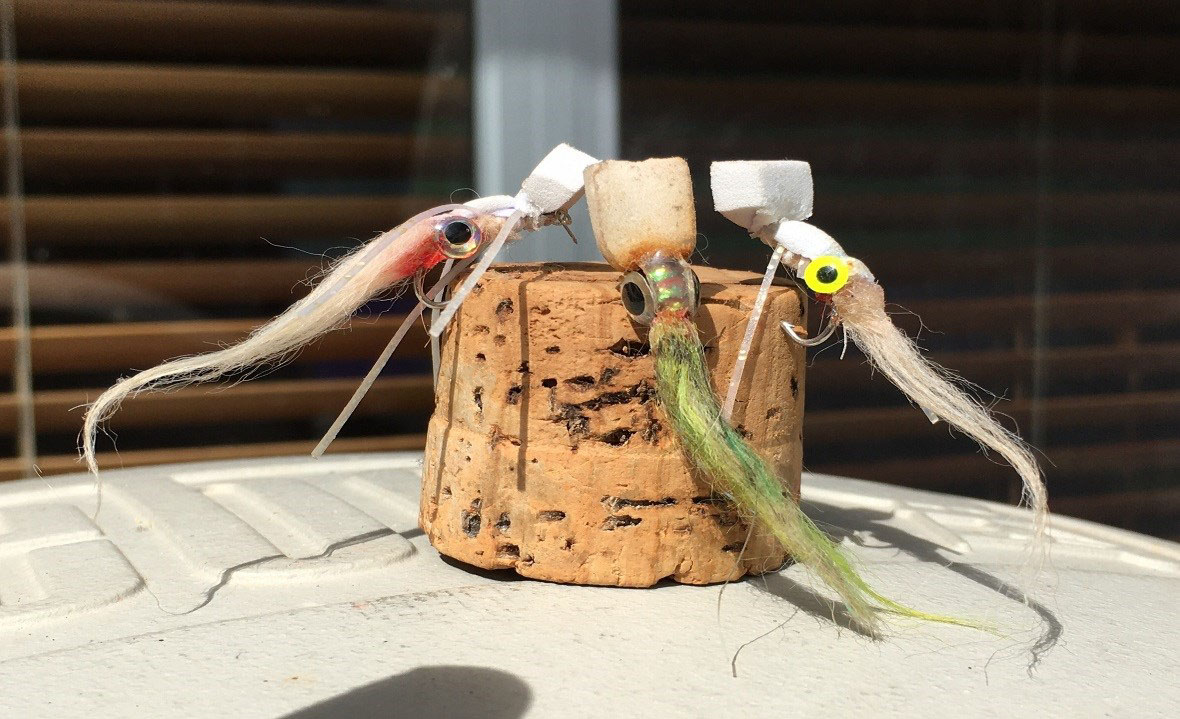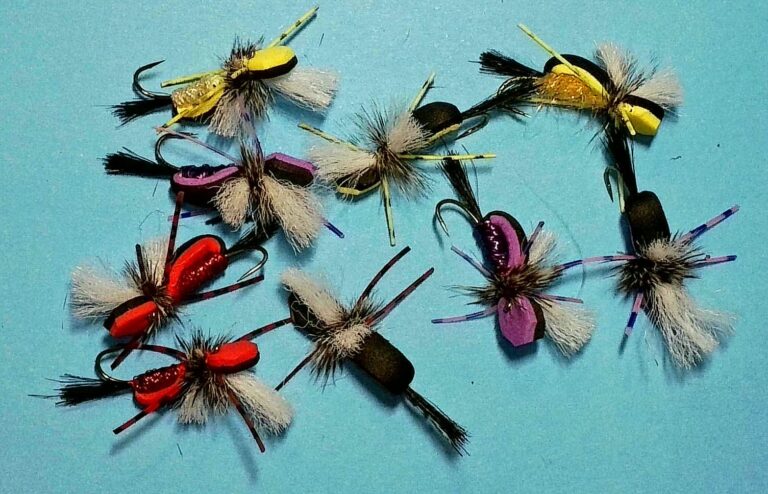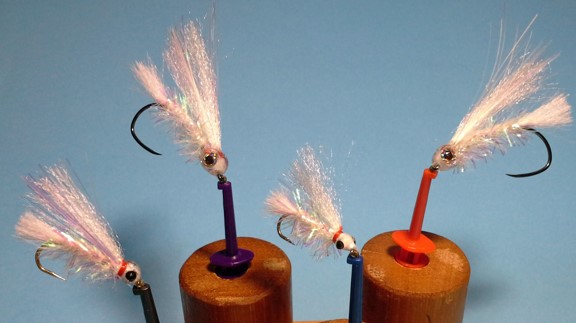The gurgler has been refined little since the original version.

Hook Size
I have been occasionally using size 6 O’Shaughnessy hooks rather than size 8 to create a bigger commotion in the water when the wind is extreme and to create a larger silhouette at night. They also present a more lively wiggle when used underwater on a sinking line with a short leader. The proportion of foam used is less to ensure the line drags it down.

Another version uses long shank hooks. These versions have tempted flathead to come off the bottom to take them. I have made some gurglers with big fish eyes and rubber legs to imitate mullet mooching on the surface (see photo).
I am also lengthening gurgler bodies by joining 2 hooks in line. I have more work to do with that idea.
Eyes
I have a night time version with luminous eyes dubbed “The midnight gurgler” – a musical joke in case you were wondering.
I finish the usual burnt mono eyes with black Sally Hanson nail varnish. Very black, shiny and hard finish. I’m using 20lb mono.
I also tie a little hump on the hook shank to splay the eyes. I wasn’t doing that originally.

The Tail
I have tried various lengths. The longer the tail the more movement when the fly is retrieved as well as when it’s sitting or drifting. It is more attractive to the fish, however, not as many hook up.
A short tail such as one hook length doesn’t attract fish quite as well but does hook a larger proportion. If the fish are aggressive it makes no difference as the whiting just suck them in. A hook and a half or two hook lengths are good compromises. Not needed on short tails. I’ve tried small stinger hooks but they interfere with the tail.
To prevent the tail from tangling around the hook shank I use a little solar resin on the top of the tail between the eyes and a little more under the tail at the join of the tail and hook shank. The stiff part should finish before or no further out than the curve of the hook. It stiffens up the beginning of the tail keeping it up and away from the hook shank without impeding movement significantly.
Tail material options

My latest is a barred fibre. The bunches have a nice taper and are the right coarseness. The bars look great and it moves nicely in the water (see photo).
They work. You can buy the stuff at Spotlight or similar places as part of a fluffy cushion cover. You score a cushion as well. I’ve also seen similar at Aldi. If you can’t locate it that way an option is to buy it online from some fly tying shops although, like all materials in those places, it is very expensive. It makes nice fish bodies as well.
I have also had success using shrimp colour polar fibre but I still think electric yellow (sort of a fluorescent green) is the most effective colour. Some other colours such as sea green are a nice colour but the fibres are too fine so tangle too easily.
Fluorescent orange egg yarn, which I normally use when practising casting, works well too.
Try whatever you can find. Lots of different ideas above. Feel free to innovate and improve.

John O’Shaughnessey




